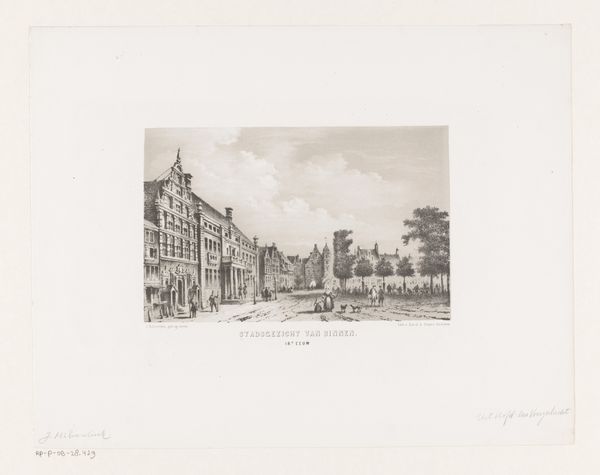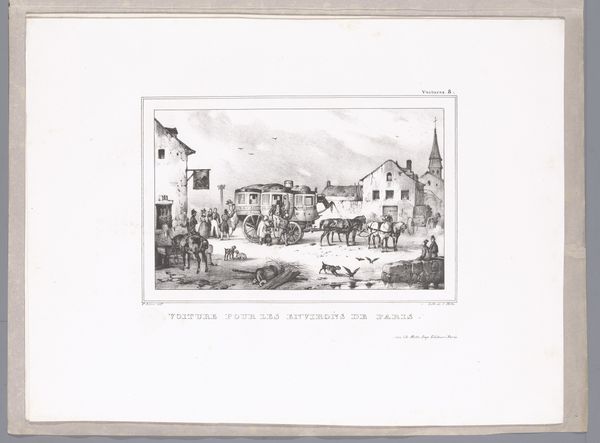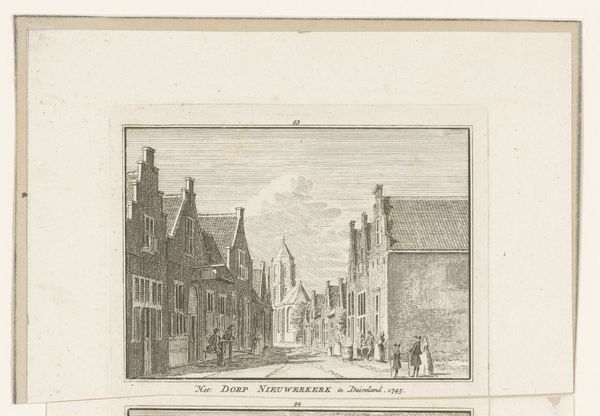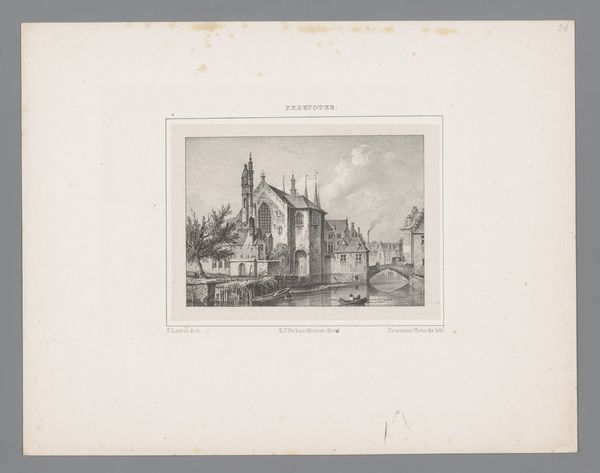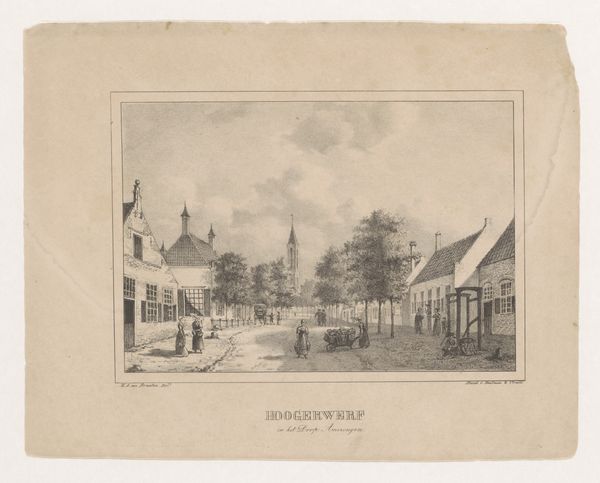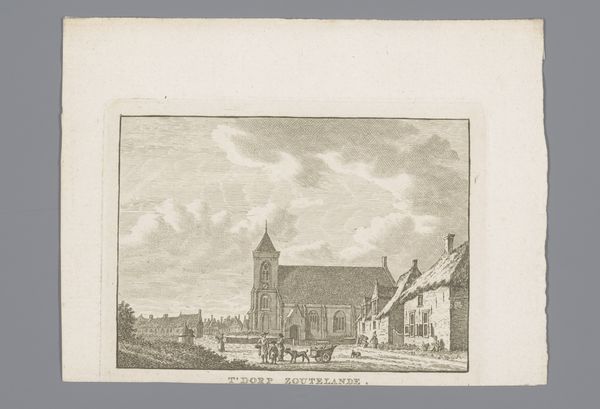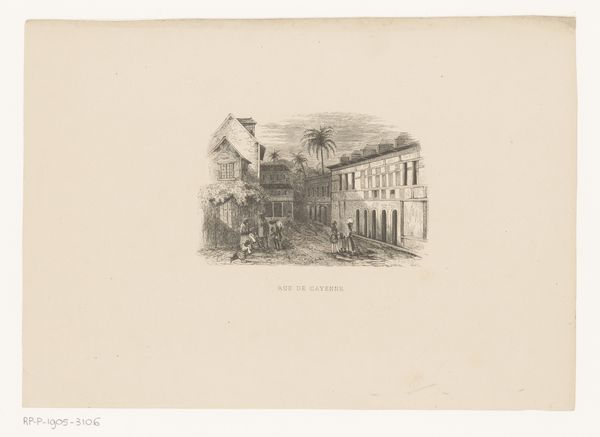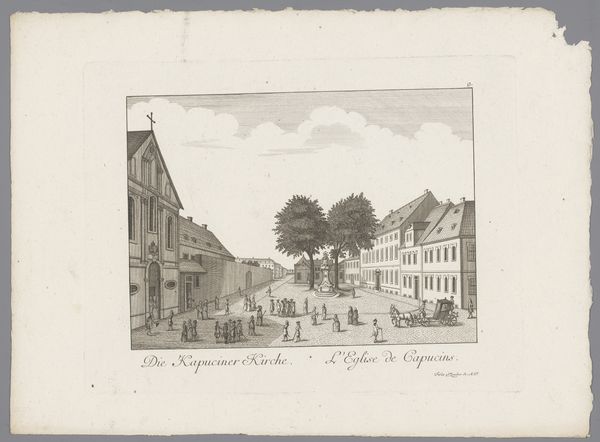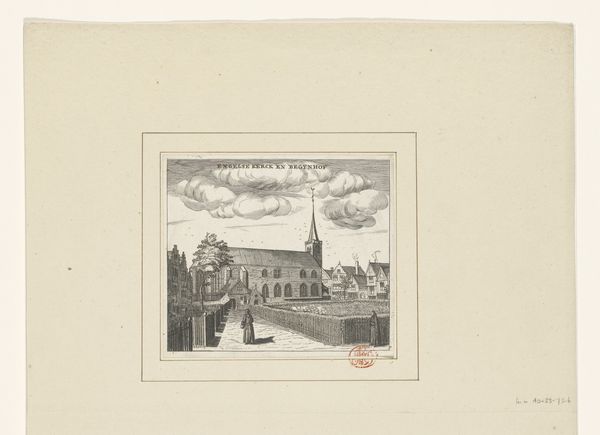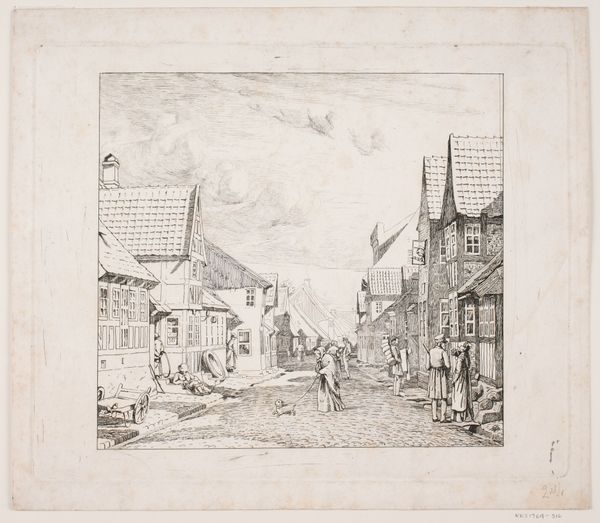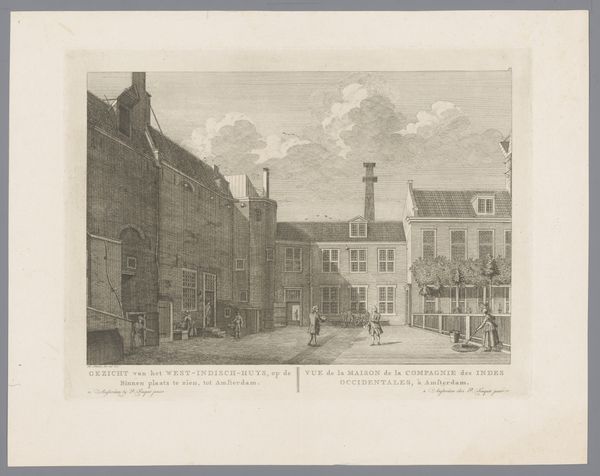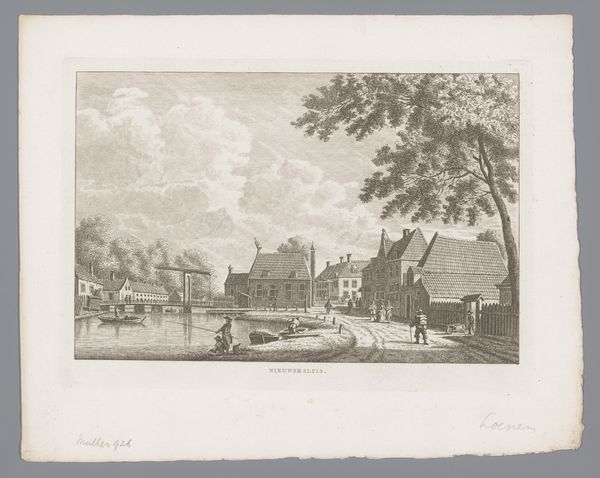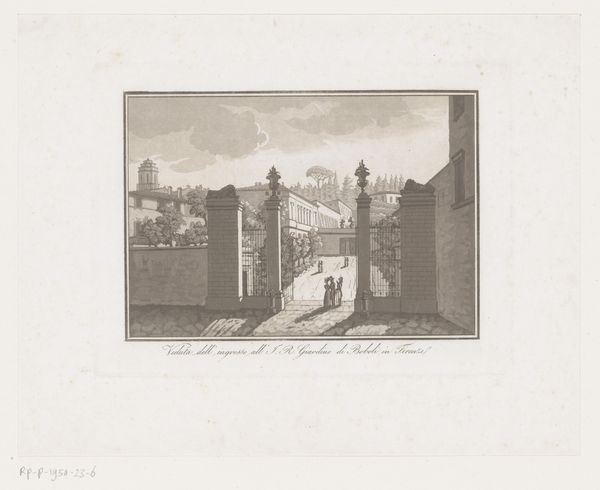
drawing, print, etching
#
drawing
#
baroque
# print
#
etching
#
landscape
#
perspective
#
cityscape
Dimensions: height 79 mm, width 101 mm
Copyright: Rijks Museum: Open Domain
Editor: So, this is "Straat en poort bij Loevestein," or "Street and gate at Loevestein," by Cornelis Pronk, created sometime between 1732 and 1750. It's a drawing, or perhaps a print, using etching. I'm really drawn to the sharp perspective... the way it guides the eye. What strikes you when you look at this piece? Curator: Formally, the image is composed with a very strong central perspective, as you've noted. Pronk employs linear perspective not merely to depict spatial depth, but also to organize the composition itself. Consider how the converging lines draw your gaze directly to the vanishing point, subtly emphasizing the gate's central role. How do the surrounding structures contribute to this effect? Editor: They frame the gate, almost like theater wings. It seems deliberate, focusing attention. Is there a deeper meaning in the choice of such strict perspective? Curator: Perspective, in this context, goes beyond mere representation; it becomes a structural element, shaping our experience of the image. Note also the meticulous detail in rendering the buildings. This precision underscores the artist's intent to not only record, but to construct an ordered, rational view of the world. What might that tell us about the values of the time? Editor: Order was highly valued. Maybe it’s reflecting that. Also, the cleanliness of the line work, without a lot of texture or tone...everything seems very controlled. Curator: Precisely. And observe the use of light and shadow. Though subtle, Pronk uses shading to define forms and create depth, enhancing the sense of structure. This isn't just a picturesque view; it's a carefully constructed composition that speaks to the underlying principles of order and reason. Does that refine your perception of the piece? Editor: Absolutely. I now see how the formal elements are working together to create a powerful, structured statement, far beyond just a depiction of a street. It’s incredibly intentional. Thanks for pointing all that out! Curator: Indeed. By analyzing its formal construction, we begin to unlock not just what is depicted, but how that depiction functions as a statement of its time.
Comments
No comments
Be the first to comment and join the conversation on the ultimate creative platform.

